ML4Q Concepts
Series #4: Driven-Dissipative Quantum Systems: Many-Body Physics, Information and Topology
The fourth ML4Q Concepts seminar series on Driven-Dissipative Quantum Systems: Many-Body Physics, Information and Topology is organized by Markus Müller (RWTH Aachen/FZ Jülich), Sebastian Diehl (University of Cologne), Fabian Hassler (RWTH Aachen), and Roman Riwar (FZ Jülich).
The seminar recordings are available for all members and cluster associates on the internal website. If you do not have access, please drop a line to the ML4Q office. Suggestions for topics/speaker for follow-up seminar series are always welcome via our (ML4Q-internal) Slack workspace!
Seminar schedule
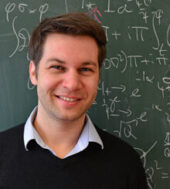
4 November 2021, 11:00
Sebastian Diehl (University of Cologne)
Quantum Systems under Drive: From Micro- to Macrophysics
Recent developments in diverse areas – ranging from cold atomic gases over light-driven semiconductors to microcavity arrays – move systems into the focus, which are located on the interface of quantum optics, many-body physics and statistical mechanics. These driven open quantum systems share in common that coherent and driven-dissipative quantum dynamics occur on an equal footing, placing them far away from thermodynamic equilibrium. We will highlight two phenomena, which witness the microscopic breaking of equilibrium conditions on a macroscopic scale, and thus do not have immediate counterparts in equilibrium many-body physics. First, we investigate the fate of the famous Kosterlitz-Thouless phase transition under driving conditions. We show that an infinitesimal non-equilibrium perturbation is sufficient to suppress this transition in large systems. On the other hand, we point out a new intrinsic non-equilibrium phase transition characterized by the onset of deterministic chaos. Second, we argue that drive and dissipation need not to act destructively on fragile quantum mechanical correlations such as phase coherence, entanglement or topological order, but on the contrary the latter can be even created by suitably combing the former to a new dynamical resource.
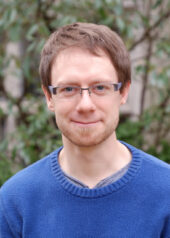
11 November 2021, 11:00
Alexander Grimm (The Paul Scherrer Institute, PSI)
Encoding and operating a Schrödinger-cat qubit in a parametrically-driven nonlinear resonator.
Quantum two-level systems are routinely used to encode qubits but tend to be inherently fragile leading to errors in the encoded information. Quantum error correction (QEC) addresses this challenge by encoding effective qubits into more complex quantum systems.
A qubit that is intrinsically protected against a subset of quantum errors can be encoded into superpositions of two opposite-phase oscillations in a resonator, so-called Schrödinger-cat states. This “cat qubit” has the potential to significantly reduce the complexity of QEC. However, the practical operation of a cat qubit faces several challenges: The oscillations are highly excited states of the resonator and need to be stabilized in order to maintain the protection. At the same time, the system has to be compatible with fast gate operations and an efficient readout of the encoded information.
In this talk, I will review some key concepts of QEC and situate our approach within the field. Then, I will present recent experimental results on the stabilization and operation of an error-protected cat qubit through the interplay between Kerr nonlinearity and single-mode squeezing in a superconducting microwave resonator. I will conclude with an outlook on different applied and fundamental research directions enabled by this experiment.
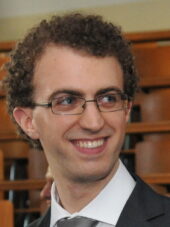
18 November 2021, 11:00
Francesco Battistel (TU Delft)
When quantum error correction meets leakage in a superconducting surface code
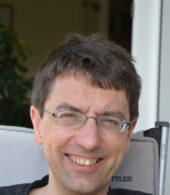
2 December 2021, 11:00
Reinhold Egger (HHU Düsseldorf)
Driven dissipative Majorana dark states and dark spaces
In this talk, after a general introduction to Majorana-based qubits, a setup consisting of driven Majorana qubits coupled to an electromagnetic environment will be discussed [1,2]. We show that in such topologically protected platforms, the driven dissipative stabilization of dark states and dark spaces is particularly robust and powerful.
[1] M. Gau, R. Egger, A. Zazunov, Y. Gefen, Phys. Rev. Lett. 125, 147701 (2020).
[2] M. Gau, R. Egger, A. Zazunov, Y. Gefen, Phys. Rev. B 102, 134501 (2020).
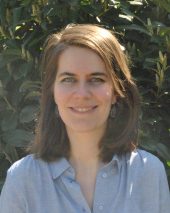
16 December 2021, 11:00
Flore Kunst (Max Planck Institute of Quantum Optics)
Non-Hermitian physics: Exceptional points, symmetry and breakdown of the bulk-boundary correspondence
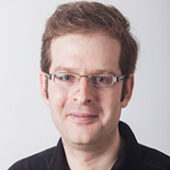
New date!!!!!! – 20 January 2022, 11:00
Moshe Goldstein (Tel Aviv University)
Topology by dissipation: From a no-go theorem and a recipe to novel transport properties and disorder-induced criticality
Nonequilibrium conditions are traditionally seen as detrimental to the appearance of quantum coherent many-body phenomena in condensed matter systems, and much effort is often devoted to their elimination. Recently this approach has changed: It has been realized that driven-dissipative Markovian dynamics of the Lindblad type could be used as a resource. By proper engineering of the reservoirs and their local couplings to a system, one may drive the system towards desired quantum-correlated steady states, even in the absence of internal Hamiltonian dynamics.
An intriguing category of nontrivial equilibrium many-particle phases are those which are distinguished by topology rather than by symmetry. Natural questions thus arise: Which of these topological states can be achieved as the result of purely dissipative Lindblad-type dynamics? Could they display novel behavior, with no equilibrium analogues? Besides the fundamental importance of these issues, they may offer novel routes to the realization of topologically-nontrivial states in quantum simulators, especially ultracold atomic gases.
I will first describe a no-go theorem we derived, which determines which Gaussian (noninteracting) topological states are achievable as the unique steady states of local dissipative dynamics, as well as a general recipe for creating, identifying, and classifying the achievable states in ultracold atoms and related systems [1]. I will explain how our results generalize and extend previous findings in the field. I will then cover to subsequent developments:
- What are the resulting transport properties, such as persistent currents and conductivity? We find that, in contrast with equilibrium systems, the usual relation between the Chern topological number and the Hall conductivity is broken. We explore the intriguing edge dynamics and elucidate under which conditions the Hall conductivity is quantized [2].
- We show that dissipation-induced topology is robust against weak disorder, but may break down under strong enough disorder, with a critical point separating the two regimes. Surprisingly, disordered dissipation leads to a critical point similar to the equilibrium one, while disordered Hamiltonian in the presence of dissipation leads to a novel critical point with a significantly different critical exponent [3].
[1] M. Goldstein, “Dissipation-induced topological insulators: A no-go theorem and a recipe,” SciPost Phys. 7, 067 (2019).
[2] G. Shavit and M. Goldstein, “Topology by dissipation: Transport properties,” Phys. Rev. B 101, 125412 (2020).
[3] A. Beck and M. Goldstein, “Disorder in dissipation-induced topological states: Evidence for a different type of localization transition,” Phys. Rev. B (Letters) 103, L241401 (2021).